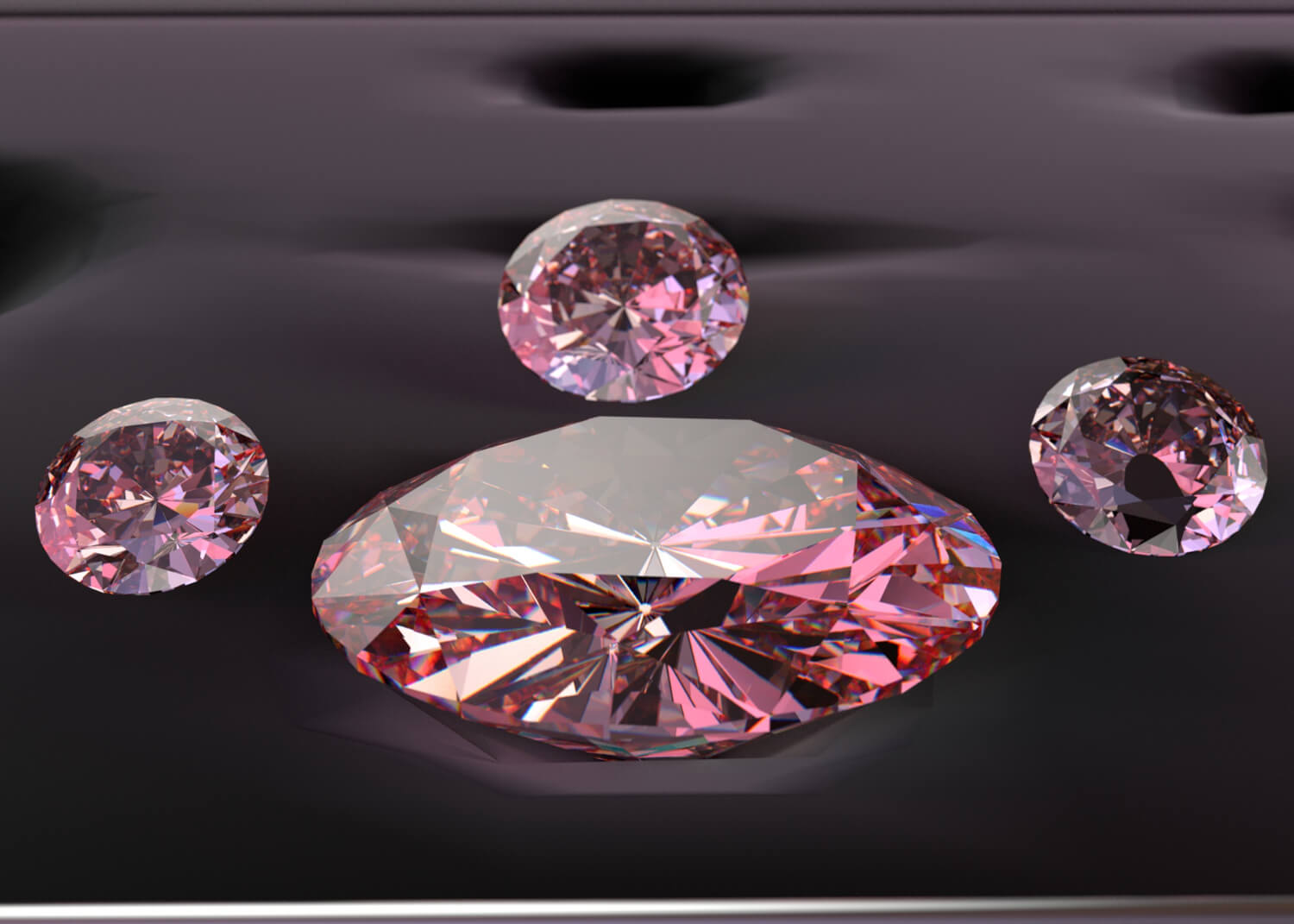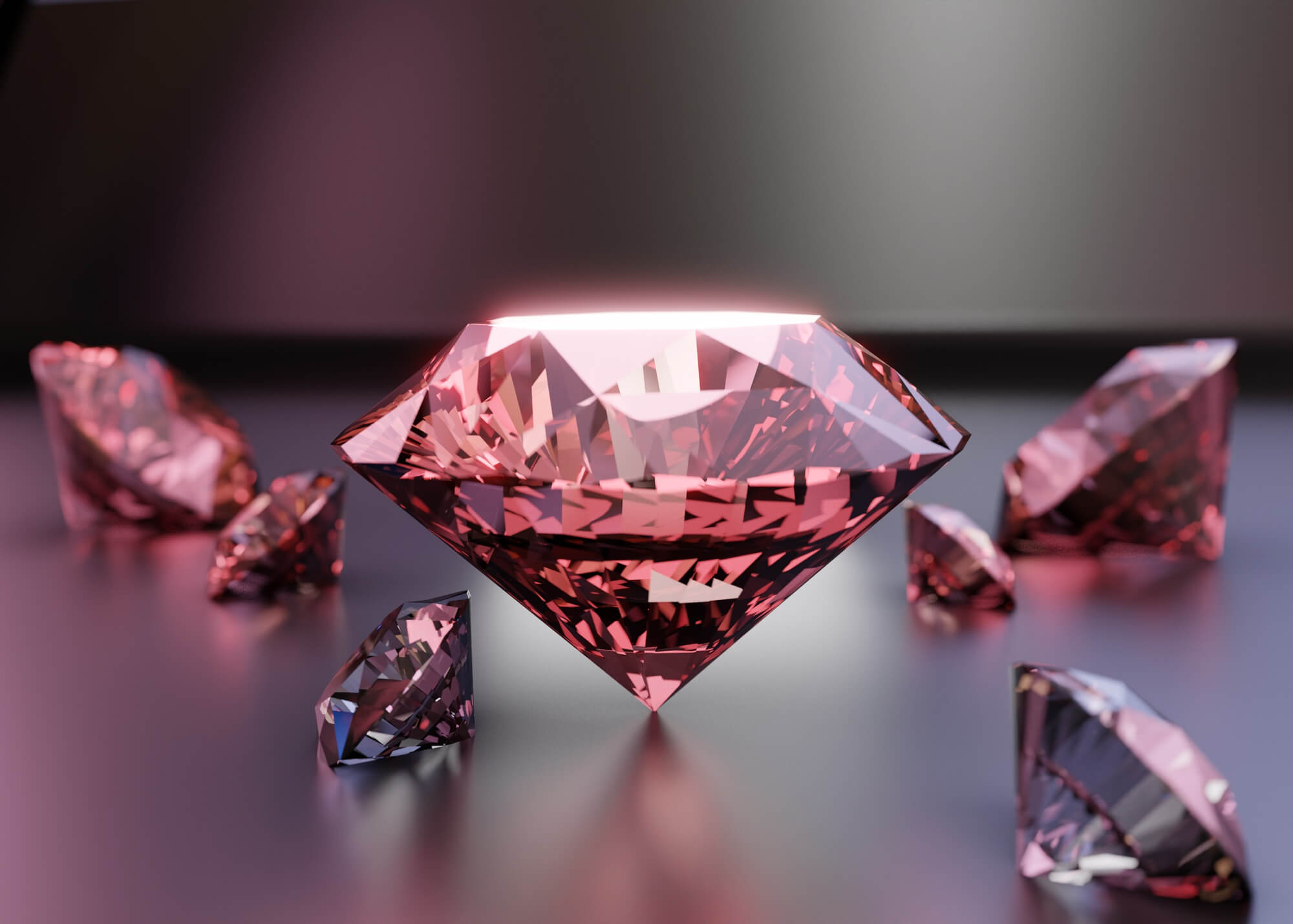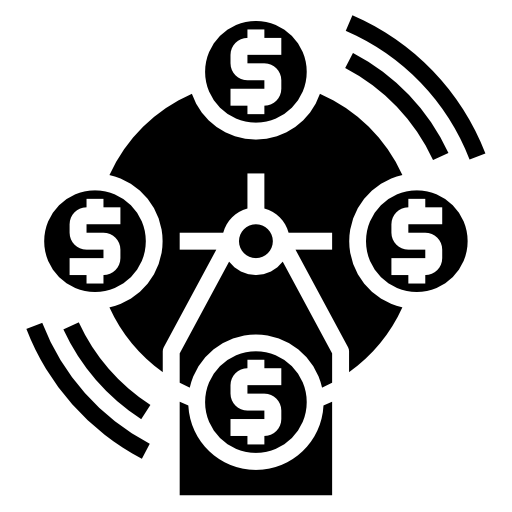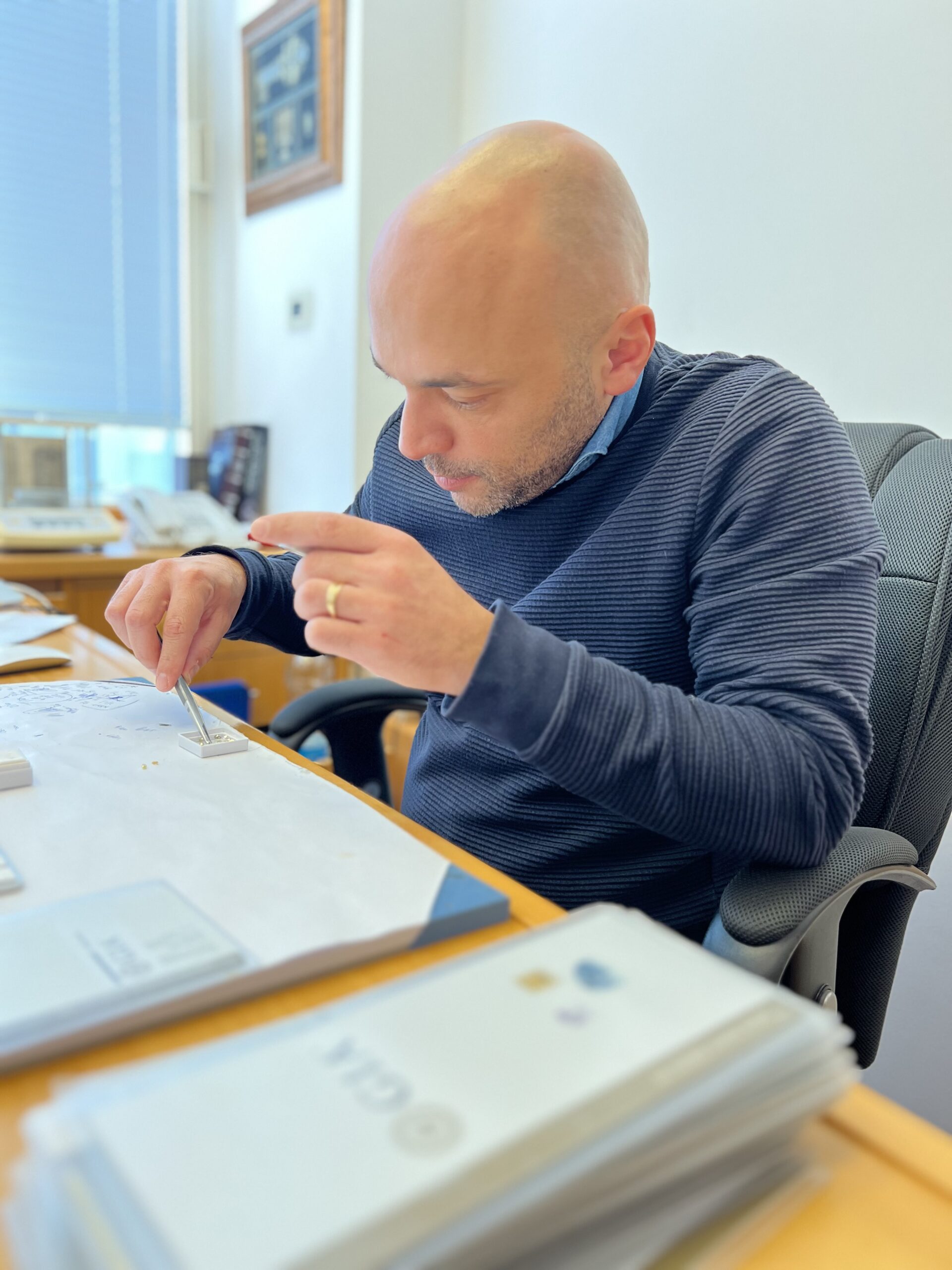VIOLET DIAMOND
Introduction
Welcome to the fascinating world of violet diamonds, where elegance and exceptional rarity meet. Violet diamonds are one of the world’s most treasured gemstones. They are known for their luxurious and enigmatic appeal, and they continue to mesmerize the eyes of those who wish to have them as a part of their jewelry or investment. We warmly welcome you to join us in this journey of learning about violet diamonds and their importance to our society, civilization, and culture.
In this article, we will explore the most crucial aspects of violet diamonds and their origins, learn about their types and shapes, and discuss their cultural significance in traditional and modern jewelry applications. Moreover, we will talk about their importance in the investment realm, why their demand continues to grow, and the closure of their specific mine.
Several significant topics need to be addressed before purchasing violet diamonds; that is why we created this article to help an individual make an informed decision before buying or obtaining a violet diamond as an investment, jewelry, or collection. Now, let us begin this journey by asking the most critical question about a violet diamond, “What is a violet diamond?”
Together, we will tackle topics such as all types of red diamonds and the specific cuts and shapes that are best for them, and we will compare them side by side with synthetic red diamonds. Also, we will delve into the celebrity realm, what natural red diamonds they are wearing, and how to craft red diamond jewelry to enhance their allure and loveliness. All of these topics will be discussed here in this article.
Now, let us begin this tour to learn more about the fascinating world of naturally mined red diamonds by asking what these red diamonds are.
What is a Violet Diamond?
A violet diamond is a part of the family of colored diamonds, which is highly rare and collectible; they exhibit a color that is reminiscent of the flower lilac and can range from faint to highly vivid. They are made up of carbon atoms, the same as any other colored and colorless diamonds; their only difference is the hydrogen and boron impurities, which cause the coloration of the violet diamonds.
The Argyle diamond mine in East Kimberley, Western Australia, is the primary source of these violet diamonds; its closure in 2020 halted production, and their price has risen in the past few years.

Explore all types of violet diamonds
Violet diamonds are some of the rarest, most unique, and most captivating displays of a diverse spectrum of colors, from light lilac up to the deepest enigmatic shades of violet. Every shade of violet offers its distinct appeal to different jewelry settings, types of occasions, and personal preferences of each user of these magnificent gemstones. To better understand, here are all the color types of violet diamonds and their specifications when compared to other color types.

Lilac Violet
The lilac violet color type resembles the color of the petals of the lilac flower, encapsulating its soft, vividness. The lilac violet diamond displays a subtle hint of violet. It is prized for its understated beauty and a slight touch of violet color. Lilac violet diamonds often promote a sense of romance and elegance that add a bit of sophistication to any attire or jewelry set.

Deep Violet
The second color type of violet diamond, deep violet, has a striking and intense coloration compared to the lilac violet. They offer much more color attention and color detail, making them great for centerpieces on jewelry, and they capture the essence of regality. This color type is often prized for its richness in color and its rarity, making them highly sought-after by jewelers, collectors, and high-value people who wish to have the essence of the violet diamond in their jewelry, which is luxury and power.

Grayish Violet
Compared to all its violet counterparts, the grayish violet diamond is known for its muted appearance, which adds sophistication and elegance in a subtle manner. The Grayish violet type combines subtle gray undertones and shades of the color violet, which results in a unique blend of type and intriguing appeal. They are prized for their enigmatic beauty and rarity, making them versatile in any jewelry setting and formal attire.

Pinkish Violet
The pinkish violet is a combination of the delicate colors of pink and the enigmatic beauty of the violet diamonds. These two colors complement each other’s beauty, creating a soft, romantic appeal, while being luxurious and glamorous at the same time. The pinkish violet diamond is one of the rarest combinations of colors available in the market; they only account for a small percent of the total mined diamonds in the world and are considered one of the most sought-after pieces of gemstone.

Purplish Violet
While this is the rarest violet diamond among all color types of diamonds, the purplish violet diamond is also known for its distinctive blend of purple hue and multi-dimensional color profile that has subtle undertones, which can be some shade of red, blue, and even pink color. The purplish violet diamonds are desired by collectors and investors due to their unique appeal and their rarity, making them a genuinely collectible and investable piece of Earth’s treasure.
Cultural Significance: Violet Diamonds in Traditional and Modern Jewelry
With their extreme rarity and unparalleled appeal, violet diamonds have been an essential piece of jewelry in our culture, signifying their status as one of the most sought-after gemstones in our traditional and modern society. Due to their mystique beauty, violet diamonds are often symbolized or associated with royalty, spirituality, wealth, and glamour, making them one of the most highly regarded colored diamonds in our history up until this day and age.
Its traditional significance dates back up to the days of monarchs, royalties, kings, and aristocrats; violet diamonds are often used as a sign of royalty and nobility due to their association with wealth and luxury. These colored diamonds are also reserved for high priests and priestesses, who incorporate them in wands and scepters due to the violet diamond’s association with power, magic, wisdom, and spirituality.
Moreover, in modern or contemporary applications, violet diamonds are used for extravagant jewelry designs that encapsulate the beauty of the violet diamond contrasting to its jewelry settings. They are also often used by highly regarded people such as celebrities, famous artists and musicians, and many other famous personalities, celebrated in high-profile events such as red-carpet and awards nights.
Quality and grading of violet diamonds
Checking the quality and grading the overall features of a violet diamond is the same as for any other colored diamond. Violet diamonds are often graded by their overall quality based on their 4Cs: cut, clarity, carat weight, and especially their color. These diamonds are rarely found in pure color; they mostly have a secondary color that ranges from gray to blue, and the most sought-after color is pinkish violet.
4Cs – Clarity is referred to as the number of visible inclusions and blemishes on the diamond. The cut of a diamond is how the diamond is cut; a beautifully cut diamond can maximize its brilliance and raise its overall beauty and value. Carat weight refers to the overall weight of the diamond after cutting; a large diamond doesn’t always mean heavy.
Color (Hue, Saturation, and Tone) – The color of a violet diamond is the primary factor to consider when checking the quality and grade of the overall diamond. The Gemological Institute of America (GIA) has created a grading scale for colored diamonds, grading from Fancy Light up to Fancy Vivid, depending on the diamond’s hue, saturation, and tone.

Violet Diamond Cuts and Shapes
In the diamond industry, several shapes and cuts are available for any particular diamond: colorless or colored. These cuts and shapes can maximize the gem’s brilliance, beauty, and overall appeal, depending on its usage in a jewelry set. Choosing the proper cut and shape for the violet diamond can increase the overall beauty and brilliance; whether a fancy vivid violet or lilac diamond, the cut and shape of it can significantly add appeal to its unique style. Here are some notable cuts and shapes for the violet diamond.

Round Brilliant Cut
The most used cut and shape for any kind of diamond, the round brilliant cut features numerous facets that effectively reflect light, maximizing any type of diamond's light reflection and brilliance. Also, this cut is ideal for making the color violet more visible, allowing its color to be more prominent.

Radiant Cut
A radiant cut combines a round brilliant cut with the depth of an emerald cut. This cut mainly boosts a diamond's violet color, making it well-suited for enhancing the color and its overall depth and vividness.

Cushion Cut
As its name suggests, cushion cut is known for its soft corners, which resemble a pillow. This cut is another excellent choice for violet diamonds. Because of their soft shape, they emphasize the depth of the color violet and allow them to achieve their highest point of brilliance.

Oval Cut
The oval cut is an elongated round brilliant cut with a more prominent and noticeable oblong facet on top. The oval shape is known to enhance the boldness of the violet color, especially those with combinations of pink or deep colors, making them appear more colorful and brilliant.

Pear Shape Cut
The pear-shaped cut, otherwise known as the teardrop shape, offers a touch of femininity and elegance in violet diamonds. With its rounded corner and a pointy end on the other corner, the pear-shaped cut allows the violet diamond to have its character and feminine allure. This shape is mostly ideal for custom-made jewelry such as necklaces, bracelets, and earrings.
Comparing Violet Diamonds to Colorless Diamonds
While both colorless and violet diamonds share the exact origin and base structural element, which is carbon, they have several significant differences that determine their overall beauty and value in the market. The comparison between these two diamonds is not only for their overall color but also for integral aspects like their supply and demand in the market, their rarity and source, symbolism and cultural significance, and many more factors.
Colorless diamonds are known for their timeless appeal and their sparkle. They are mainly valued when they have no shade of any color, lack of inclusions and blemishes, and are able to reflect light efficiently. Their value depends on their overall weight and clarity, without any visible blemish or inclusion. Moreover, they symbolize purity, timelessness, and clarity, making them perfect for wedding and engagement rings and even for necklaces and earrings.
On the other hand, violet diamonds are known for their enigmatic appeal, mesmerizing looks, and extreme rarity. They are valued for the deepness of their color, scarcity, and vivid hues; their value depends primarily on their color, unlike that of a colorless diamond, which depends on clarity and carat weight. Violet diamonds symbolize royalty, wealth, and luxury. Collectors and investors often prefer them over colorless diamonds due to their rarity and good investment potential.
Crafting Distinctive Jewelry Designs with violet diamonds
Violet diamonds are known for their versatility and luxurious appeal, which is why people often craft distinctive jewelry designs based on them. When crafting with violet diamonds, it is essential to set these unique stones in a characteristic setting to enhance their color, make them appear more prominent, and complement the overall design of the jewelry. Here are some jewelry designs people often make with violet diamonds.
Engagement Rings
Violet diamonds on an engagement ring add sophistication, luxurious looks, and unique beauty to its overall appeal. The violet diamond offers a simplistic yet elegant approach to an engagement ring, making it even more special with the occasion and enhancing its uniqueness and once-in-a-lifetime feel. To make a unique approach, set the violet diamond in a band of colorless diamonds to improve the color and appeal and make it more alluring.
Elegant Earrings
To make a sleek earring with violet diamonds, cut the violet diamond in a round brilliant cut to enhance its overall color and appeal, then set it with a group of white or colorless diamonds to make the violet diamond’s color dominant.
Statement Necklaces
A violet diamond necklace will surely catch the attention of every onlooker who takes a glimpse of this unique jewelry. Place the violet diamond as the centerpiece for this jewelry and set it in a rose gold or white gold setting to enhance its color, making it perfect for extravagant events or even casual attire.
Custom Jewelry Design
Given the fact that the violet diamond is versatile for every jewelry design, they are also used in custom jewelry such as watches, brooches and pins, hair accessories, cufflinks, tie pins, and many other accessories that are used for formal and casual events. It all depends on the artistry of the jeweler and the personal preference of the client. The possibilities of the violet diamond in a jewelry design are endless, and there are still many options for them to be discovered.
What to Look For in a Violet Diamond Jewelry?
There are several things to consider before purchasing violet diamond jewelry, things that contribute to the overall value of violet diamond jewelry, and what determines its quality. Before making an informed decision, an individual should have the proper knowledge of what to look out for when buying this violet diamond jewelry; due to its rarity, they are often counterfeited and faked. Here are some of the most important things to look for before buying violet diamond jewelry.

Check the 4Cs
Like any diamond, colorless or colored, the 4Cs need to be checked thoroughly before making a violet diamond jewelry purchase. Remember to check the diamond cut, clarity, color, and carat weight and ensure their quality and authenticity visually. Most colored diamonds have their certificate issued by the Gemological Institute of America (GIA); make sure that the information about the 4Cs written on the certificate directly describes the violet diamond.

Check the Diamond’s Setting
Check the metal settings of a violet diamond in jewelry. The metal setting needs to complement the color of the violet diamond perfectly, whether a rose or white gold setting, platinum, or even colorless diamonds; the surroundings of violet diamond jewelry should always accentuate the enigmatic beauty and rarity of the violet diamond.

Check the Certificate
Always check for the certificate or documentation of violet diamond jewelry. It needs to be from reputable laboratories like the Gemological Institute of America (GIA) to ensure that it is authentic and genuine. These reputable laboratories conduct unbiased assessments of any diamond. They have trustworthy professionals who examine the overall quality of a diamond and have the most advanced technologies for these kinds of tasks.

Check the Overall Appeal
At the end of the day, it all comes down to an individual's personal preference. Always check the overall appeal of the violet diamond to your preferences, needs, and best advantages. Whether you use it for casual attire and everyday looks, exquisite galas and events, or even for investment purposes, the need for the violet diamond is solely on the customer's demand.
Investment Insights: Why Violet Diamonds Are Gaining Value in the Market
Violet diamonds are emerging as one of the best investments due to their scarcity and high demand. The value of the violet diamond is continuously growing and will continue to do so based on market research and trends. To better understand the importance of the violet diamond in the investment realm, we created a list of factors explaining why these precious diamonds are gradually making value in the market, and here’s why.

High Demand and Low Supply
When there is a high demand for products or services, they tend to rise in price and value. Moreover, low supply works the same as high demand; scarcity of a product or an item also raises the cost and value of the product or service. Violet diamonds have both of these attributes. Modern jewelry applications and rarity make the demand for violet diamonds rise, and due to the closure of the Argyle mine, where almost all of the violet diamonds were mined, they became even scarcer, making their prices skyrocket in recent years.

Aesthetic Appeal
The violet diamond’s aesthetic appeal also gives it timeless beauty, raising its demand even more. Celebrities, famous actors and actresses, and high-value people are often seen wearing these aesthetic diamonds in extravagant events such as red-carpet events, awards nights, and more. This celebrity showcase of the aesthetic appeal of violet diamonds gradually increases demand, value, and desirability.

Historical Data and Emerging Trend
In recent years, violet diamonds have shown a significant increase in popularity based on historical data. This event also drives up their demand and value in the market, which is why violet diamonds are embraced in modern applications and pop culture. The beauty of these diamonds not only transcends historical culture but also emerges in contemporary and modern culture, making it investable and an excellent way to diversify assets.

Diversification of Investments
The violet diamond is an excellent choice when diversifying a portfolio in investment; it has higher possible yields and continuously growing demand, as well as its value. Seasoned investors often diversify their investments to mitigate unnecessary risks, battle inflation, and prevent a significant loss when there is a market crash or crisis. This tactic is a proven and trusted method by professionals; they often suggest diversifying assets into tangible ones to ensure security in bad times.
Celebrity Style Spotlight: Violet Diamonds Making Waves on the Red Carpet
Red-carpet events such as the Oscars, Cannes Film Festival, Academy Awards, Golden Globe Awards, and many more extravagant events have been prominent displays of the colored diamond’s enigmatic beauty and romantic allure. Due to the extreme rarity of the violet diamonds, there has never been any documentation about them in red-carpet events and galas.
However, given the fact that these diamonds are scarce and very hard to find, many high-profile celebrities such as famous actors and actresses, talented musicians and rap stars, and business persons may possess a natural violet diamond as a part of their very exclusive collection of jewelry.
Moreover, given the violet’s scarce nature, it is essential to be discreet when making transactions and confidential agreements; this is why these high-value people never disclose their jewelry collection to the public.
Violet diamond certification
A violet diamond certification is crucial documentation about the diamond’s overall quality, authenticity, and grading. A diamond certificate usually has all the needed information about the diamond’s origins and quality, as well as a detailed breakdown of its characteristics. It has details such as the diamond’s 4Cs (cut, clarity, carat weight, and color) and whether a diamond is naturally mined, synthetic, lab-grown, or even treated.
The Gemological Institute of America (GIA) is the leading laboratory that conducts unbiased assessment, grading, and quality checking for colored diamonds, such as violet diamonds. Its professional scientists and gemologists are equipped with innovative equipment and all the necessary knowledge about diamonds.
We ensure that all of the diamonds we sell are legitimate, authentic, and properly documented by the GIA. We prioritize getting a certificate from the GIA for each and every little piece of violet diamonds we sell to ensure the trust and confidence of our customers and to achieve an everlasting relationship between us and our future clients.
Verifying Authenticity: A Guide to Checking Violet Diamond Validity
Naturally mined violet diamonds are known as extremely rare and scarce pieces of treasure, which is why verifying their authenticity is an integral process that needs to be done first on the checklist and thoroughly to better understand their origins and quality before buying them. Several factors need to be checked when verifying the authenticity and validity of a violet diamond. We created a step-by-step guide to help an individual validate a violet diamond, and here it is, beginning with its certificate.
Certificate – First, check for the certificate’s authenticity; if the certificate is proven to be legitimate, check its contents. A legitimate certificate should come from reputable institutions like the Gemological Institute of America (GIA), the International Gemological Institute (IGI), or the American Gemological Society (AGS). Certificates from these institutes have detailed information about a specific diamond and are done by professional gemologists and scientists.
Visual Inspection – Secondly, check for the diamond’s visual appearance. The certificate should indicate its overall appearance, including its 4Cs (Cut, Clarity, Carat Weight, and Color). An authentic naturally mined violet diamond’s color should display a distinct and evenly distributed violet hue; if it doesn’t show this characteristic, it may be a synthetic or treated violet diamond.
Professional Help—Lastly, always seek reputable professionals who can help determine the authenticity of a violet diamond. Due to their extreme rarity, only professional jewelers and gemologists can identify their validity. Seek help from professionals who are well-versed in these types of rare diamonds; they can provide valuable insights and assistance in determining a diamond’s value.
Lab Grown vs. Mined Violet Diamonds
Both lab-grown or synthetic violet diamonds and naturally mined violet diamonds are prized for their unparalleled beauty and mesmerizing hues. While they share similar formation structures, they differ in the most crucial aspects, like their demand from the public, the location where they originate, their market perception, investment potentials, and many more. Understanding their differences is essential when making an informed decision on what to buy. Here is a comparison table on the most notable differences between lab-grown and naturally mined violet diamonds.

Verifying Authenticity: A Guide to Checking Red Diamond Validity
Due to the scarcity of red diamonds, a potential buyer must take rigorous steps to ensure their authenticity and quality. Because it is astronomically valuable, it is often counterfeited and synthetically produced, so it is essential to thoroughly examine it to remove any doubt and uncertainty before buying this rare gemstone on the market. Luckily, we prepared a guide to help anyone purchasing a red diamond; here is the step-by-step guide.
Certificate
Before purchasing a red diamond, ensure it has a certificate from reputable institutes like the Gemological Institute of America. Moreover, secure the certificate is legitimately from them to avoid future troubles.
4Cs
After securing the certificate of the diamond is legitimate, an individual must check if the 4Cs of the diamond is directly indicated on its certificate. The 4Cs of a diamond include carat weight, clarity, cut, and color.
Subject to light
A natural red diamond typically exhibits little to no fluorescence when exposed to ultraviolet light (UV); a strong fluorescence can indicate that the diamond is treated or synthetically produced.
Consult with experts
Always seek professional and reputable experts before purchasing; find the best-experienced gemologist or diamond experts who can help and provide further guidance. And as a last tip, don’t fall into deals that are too good to be true; they are often counterfeited or synthetic.
Lab Grown vs. Mined Red Diamonds
Due to the rarity and desirability of natural red diamonds, technological advancements now offer synthetic copies of them without the effort of digging mines and other transport costs, as well as the environmental impact they possess. However, naturally mined red diamonds remain the rarest and most sought-after piece of jewelry, making them more valuable and marketable. Understanding the difference between these two types of red diamonds is crucial for consumers. Therefore, we created a simplified table to highlight their differences between each other.
Aspect
Origins
Formation
Cost and Value
Market Perception
Investment Potential
Naturally Mined Violet Diamonds
Produced in mines all over the world, specifically the Argyle mines in Western Australia
Formed naturally deep beneath the Earth’s mantle over millions of years ago under extreme heat and pressure.
More expensive and highly valuable due to their scarcity and extreme rarity.
Valued for their rarity, natural origin, and historical significance.
Has a very high investment potential due to extreme rarity.
Lab-Grown or Synthetic Violet Diamonds
Synthetically produced in laboratories and institutes by scientists and gemologists.
Formed in a laboratory with controlled environment, and by a process called High Pressure High Temperature (HPHT) or Chemical Vapor Deposition (CVD).
More affordable and less valuable compared to naturally mined violet diamonds.
Increasingly popular choice for ethically-conscious consumers seeking sustainable alternatives.
Low investment potential due to unlimited supply.
Quick Facts about violet diamonds
- Violet diamonds belong to the group of the rarest colored diamonds on Earth.
- The violet coloration is due to some trace minerals like hydrogen and boron.
- There are several shades of violet a diamond can be, ranging from lilac up to deep purple.
- The Argyle mine is a significant source of violet diamonds until its closure in 2020.
- Natural violet diamonds have a very high price due to their rarity.
- Violet diamonds are famous for collectors and investors.
- There is no documentation of the violet diamonds in red-carpet events.
- ⦁ Violet diamonds symbolize wealth, power, and luxury.
- ⦁ Some violet diamonds are treated and can affect their value.
- ⦁ The Argyle Violet is the most famous violet diamond that has ever been mined.
- ⦁ The cut and shape of a violet diamond can increase the color saturation and brilliance.
- ⦁ Violet diamonds are scarce; the total mined violet diamonds account for less than 100 carats worldwide.
- ⦁ Violet diamonds are often associated with high-value persons like kings, high priests, and royalties due to their mysterious color.
FAQs
How much are violet diamonds worth?
As with any diamond, the cost of a violet diamond depends on the quality of its 4cs, mainly color.
What are violet diamonds called?
As with any diamond, the cost of a violet diamond depends on the quality of its 4cs, mainly color.
How rare are violet diamonds?
Violet diamonds are exceptionally rare. There are only about 100 carats of violet diamonds mined worldwide.
Where do violet diamonds come from?
Most of the violet diamonds that have ever been mined came from the Argyle mine in Western Australia.
How are violet diamonds formed?
Violet diamonds are formed deep beneath the Earth’s mantle over millions of years under extreme heat and temperature; some say that their coloration comes from trace minerals such as hydrogen and boron.
What do violet diamonds symbolize?
The violet diamonds symbolize wealth, royalty, spirituality, energy, creativity, and many more.
Why are violet diamonds so expensive?
Violet diamonds are very expensive because they are extremely rare. Historically, they were only offered to royalty and high-value people.
Final Verdict
In conclusion, red diamonds represent the pinnacle of rarity, prestige, and uniqueness like no other gemstone can. It symbolizes power, wealth, love, passion, fiery desire, and fame like no other diamond can. Its renowned exclusivity separates them from any other colored diamonds available; due to their exclusiveness, they are perfect for persons who deserve to wield this one-of-a-kind jewelry and express their fiery allure throughout the ages.
With their demand that is still rising today, we will continue to deliver high-quality colored diamonds, especially violet diamonds, to our beloved consumers and future clients. We are deeply thankful that you have joined in this beautiful trip to learn about violet diamonds; we will keep quality content like this in the future and always create articles like this to help future consumers and clients make an informed decision when purchasing any kind of diamonds, mainly naturally mined colored diamonds.




